Blog Posts
Departure
Ken Zillig
After much stress, we left Antarctica on the 18th of December. We flew out on a LC-130 manned by the US Air National Guard. These planes are specially equipped with skis to enable them to land and take off from snow-fields. The flight took ~7 hours to reach Christchurch. I read “Endurance” the story of Ernest Shackelton’s failed Antartic voyage. Seemed fitting.
Ice Edge
11.20.18 - Ken Zillig
We were fortunate enough to venture all the way to Cape Royds, approximetly 30 miles across the ice sheet. We made this journey by snow machine. Aside from the Adelie penguin colony and Shackleton’s hut we got to see the ice edge. This is where the sea ice ends and the open southern ocean begins. This edge moves with the seasons, by February the ice will have retreated all the way to McMurdo. The view will stick with me forever as one of the most unique places I will ever be.

Penguins
10.31.18 - Ken Zillig
Today we saw some penguins. On our voyage out to the Cape Evans Ice Wall we found some Emperor Penguins Aptenodytes forsteri just off the road way. We exited our Pisten Bullies and waited for them to approach. We had been told that the penguins are very curious creatures and will approach you. And so they did, the group of nine laid down on their bellies and slid across the ice to come and check us out. In the end all of them penguins were within feet of us. They had a strange intelligence about them, eyeing each of us individually trying to figure out what exactly we were. There has never been a ‘land’ predator in Antarctica, and therefore the Penguins were unafraid of our presences and would waddle between us and call out to one another as if we weren’t there at all. At times it seemed they were calling to us, as if trying to make contact. They never appeared threatening and would have likely hung out with us all day if we hadn’t left.
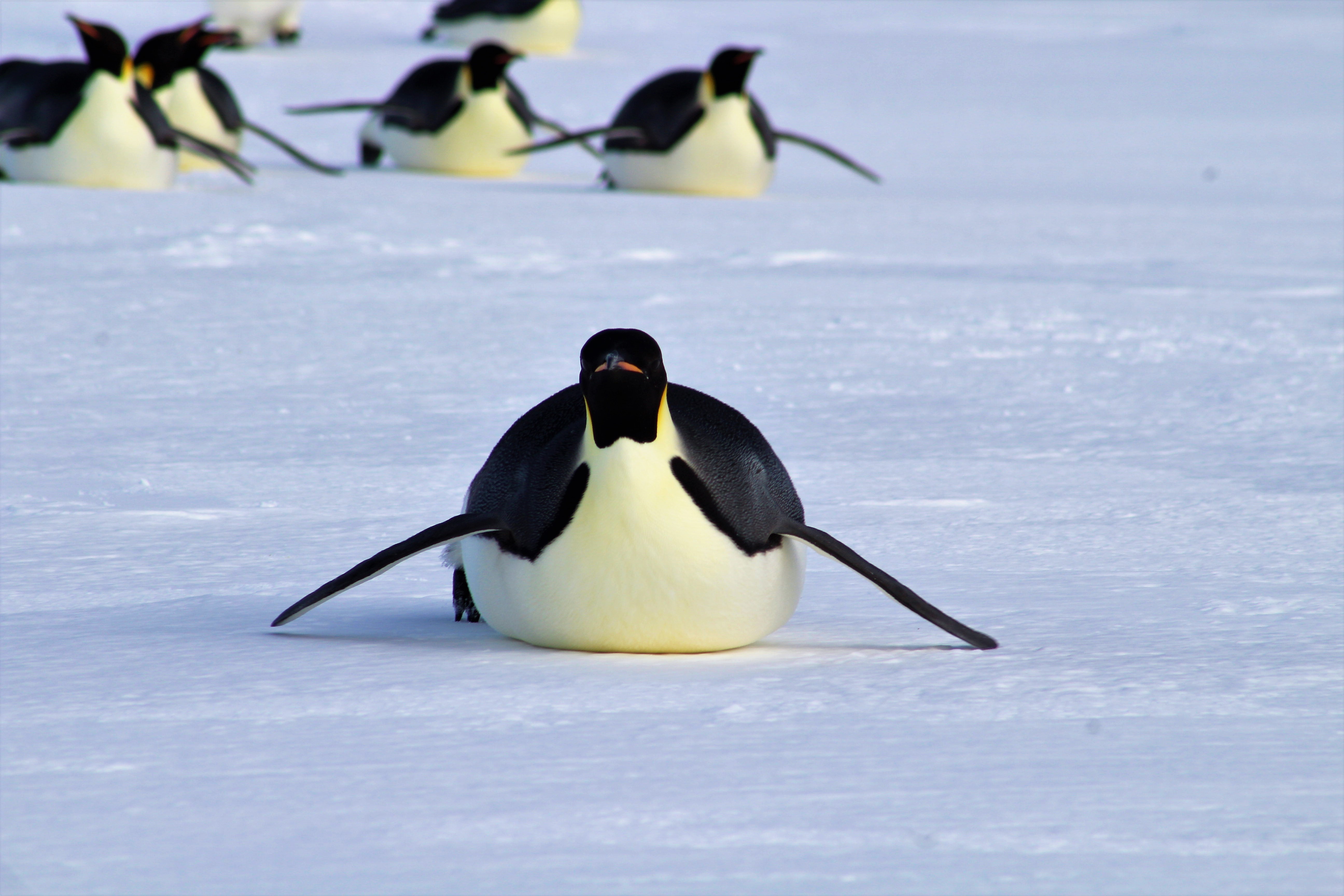
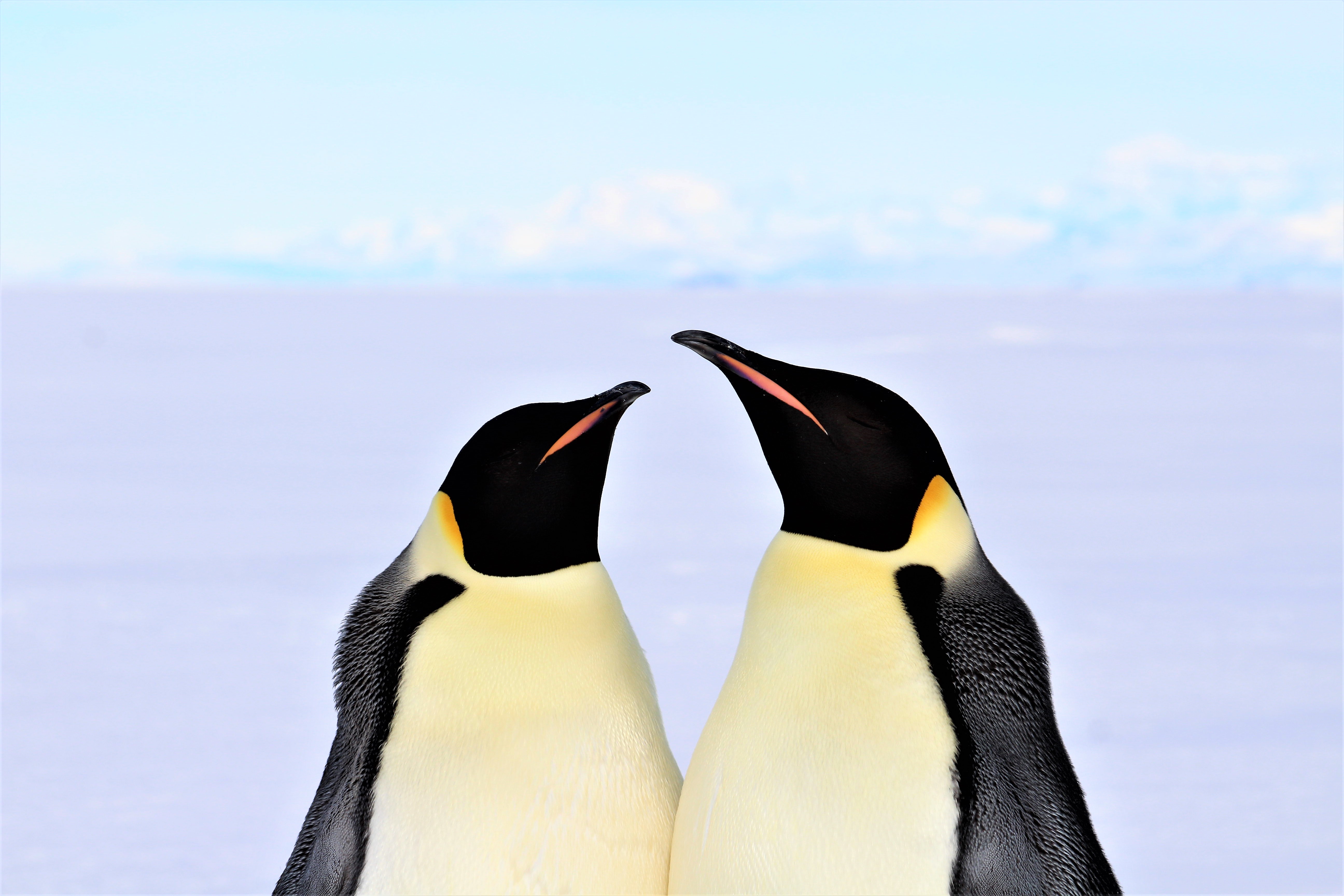

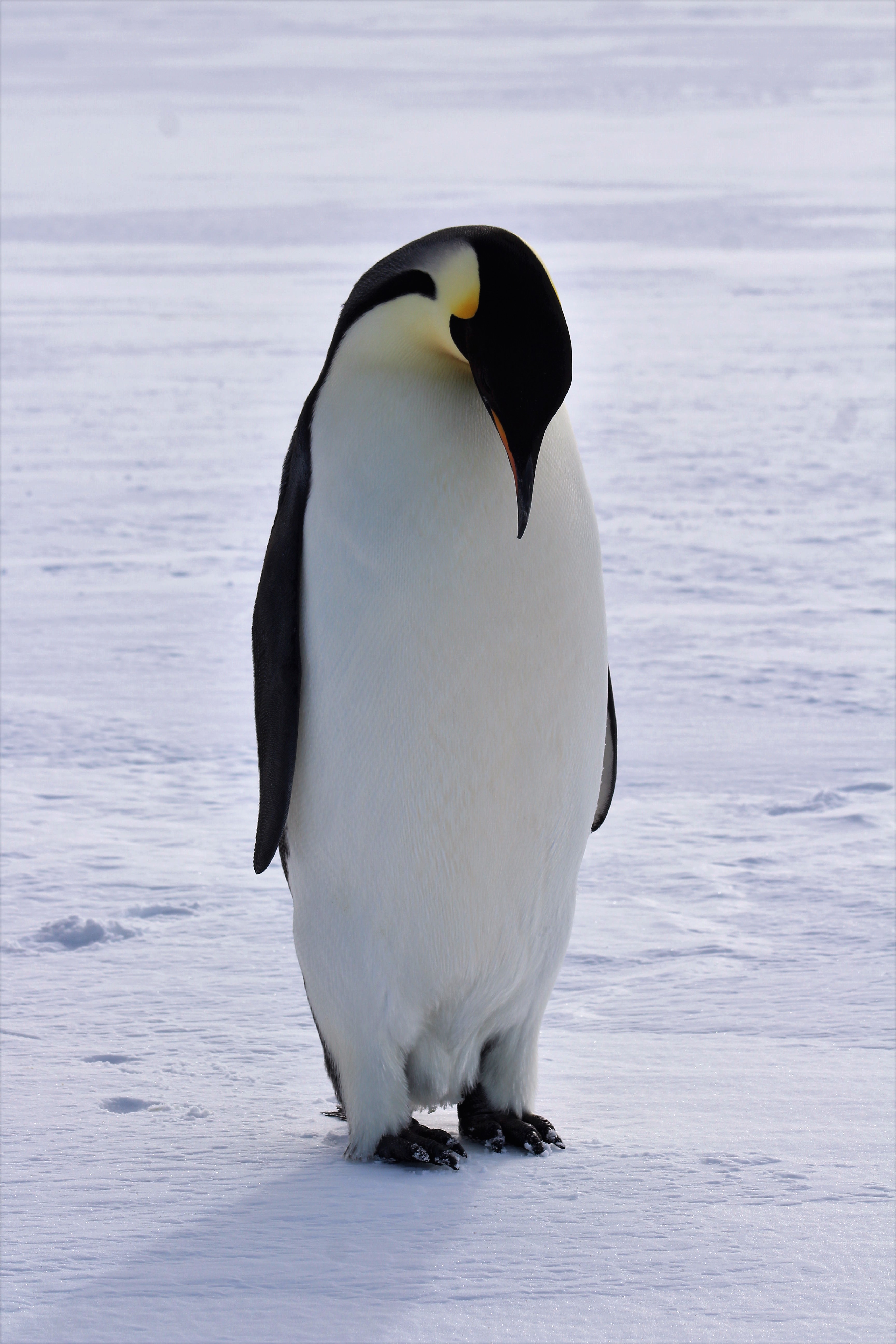
A Day in the Life
10.28.18 - Ken Zillig
OUr lives have settled into a routine here at McMurdo. We wake up every day at 6:30 and make our way down to the galley for breakfast. Breakfast has been nicely varied and typically contains some variety of eggs and sausage, potatoesor hashbrowns. But ther are also always pastries, vegetables, and if were lucky, fresh fruit. By 7:30 we are in the lab and checking our CO2 system. We need to ensure that all the vlaves are compressors are working properly and that each tank is recieving the appropriate amount of water and bubbled CO2 mixture. After the systemm check and depending on the day we either spend the next few hours running water chemistry to verify our CO2 treatments are stable or get to work setting up the other experimetnal compoenents. Recently Andrew and I have been working on behavioral chambers that will allow us to test how CO2 and temperature influence fish behavior. Mandy has been working on setting up the metabolic test chambers.
At around noon we head to lunch which is typically some mix of pork, beef or chicken dishes. There is also a deli wher eyou can mak eyour own sandwhich or wrap. Pizza, more pastries and suprisingly good cookies are also available. We have been told taht the kitchen staff is targetting to feed us each ~4500 calories a day to ensure we stay warm in the cold weather. After lunch it is back to the lab to continue running seawater chemistry or building our respective projects. On some days we head out with the divers to aid them in catching fish off the McMurdo Jetty. Going to the jetty, which is maybe 100ft offshore is a welcome break form thelab and getsus excited to heat out on the sea ice in earnest.
Between 6 and 7 we will head to dinner. Diner is much like lunch, but typically there is some typ eof burger or taco bar where you can get food ‘to order’ as well as the typical food available. After dinner its back to the lab to wrap up any outstanding task form the day. Recently these have kept us in lab until 8:30 to 9. If we have the energy we may head to the bar or simply retire to our rooms to rest, write letters and watch T.V. By about 10:30 to 11:30 were in bed and fast asleep.
We expect this daily routine to be the norm for most of our time here in McMurdo, although punctuated by day-trips onto the sea ice to gather fish or opportuniteis to explore historical sites like Rober Falcon Scott’s Antarctic Expedition Hut.
Cold Snap
10.22.18 - Ken Zillig
Today it felt like antarctica outside. The temperature was a brutual -42°F with a stiff breeze. While we spent most of the day inside the Crary Lab Building, for about an hour we had to be outside collecting field gear and setting up our PistenBully. To go into the field we carry 3 survival bags, each of which can support two people for 3 days stuck out on the ice. We also carry flags to mark cracks we find, and trails across the ice so as to not get lost. There is also a gas powered drill and extendable bits (called flytes) for boring holes through the ice to measure its thickness. Currently the sea ice around McMurdo is between 5-8 feet thick, more than enough to support the weight of our crew and PistonBully.
As proof the extreme temperatures I present the following evidence.
Arrival & Set-Up
10.20.18 - Ken Zilig
We made it! We arrived to Antarctica on the 17th of October to a sunny, clear and windy day. The temperature at the time was -34°C (-30°F). We travelled from the Pheonix Airfield to McMurdo Station via Ivan the Terra Bus. Since we have settled into our dorm rooms and begun to grow accoustomed to the constant day light. We have spent several long days in the lab working hard to get the experimental system set-up so that we can go out on the sea ice and collect our fish (pictures in the ‘Antarctic Organisms’ tab). We have recieved training in how to use GPS, drive a PistenBully, navigate sea ice and determine if cracks are safe to cross and field survival. So far the weather has been relatively pleasant and we hope that will continue.
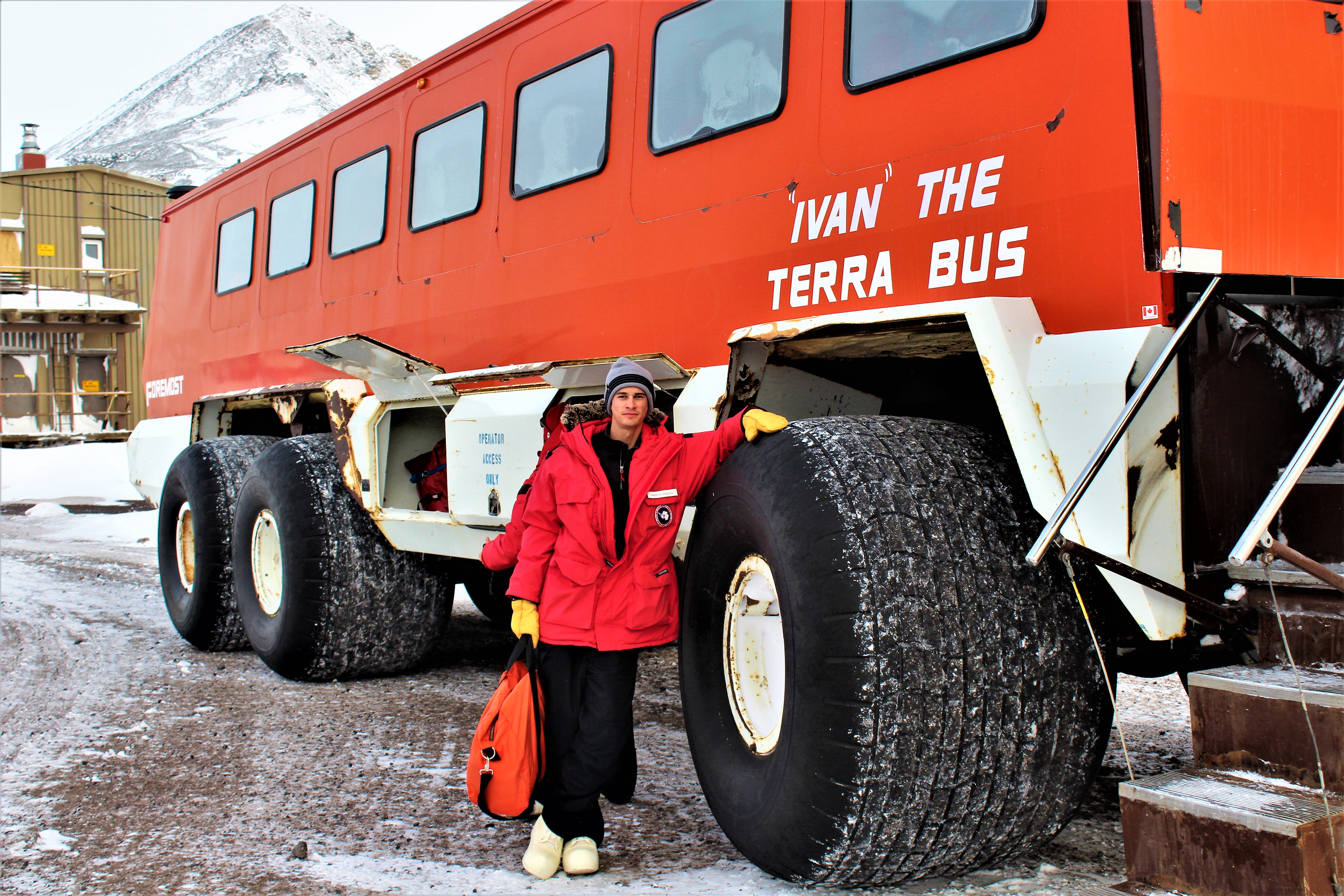
Andrew and Ivan
Departure
10.15.2018 - Ken Zillig
Well it has been a long time coming, but all signs point to tomorrow (October 16th) to be our departure date. We will be on either the first or second flight (2 planes are leaving tomorrow) to the ice for the season. I have heard rumors that this is the longest delay they have ever had getting the first flights of the season to McMurdo.
Over the past two weeks we have made the most of our time in Christchurch. Andrew, Mandy and I have gotten out of the city and were able to enjoy some of the beautiful landscapes that New Zealand is known for. We also couldn’t wait to see penguins so we tracked down some little blue penguins Eudyptula minor outside of Akaroa. Same goes for Great Spotted Kiwi Birds Apteryx haastii which we visted at a nature reserve close to the airport. Being delayed in New Zealand is about as getting delayed gets, but we are eager to head south and get started on the research.
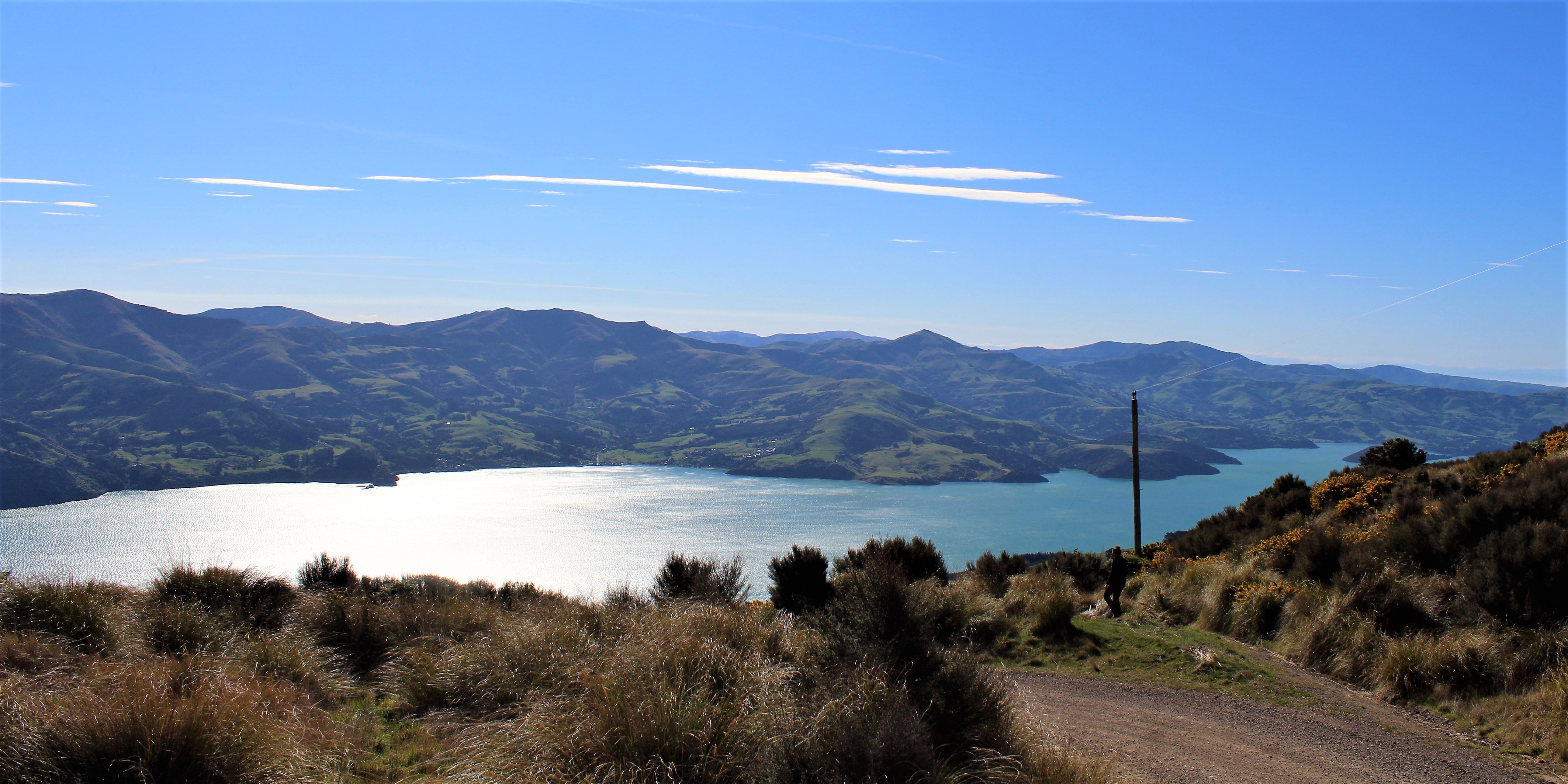
A view of Akaroa Harbor from the top of Lighthouse Road
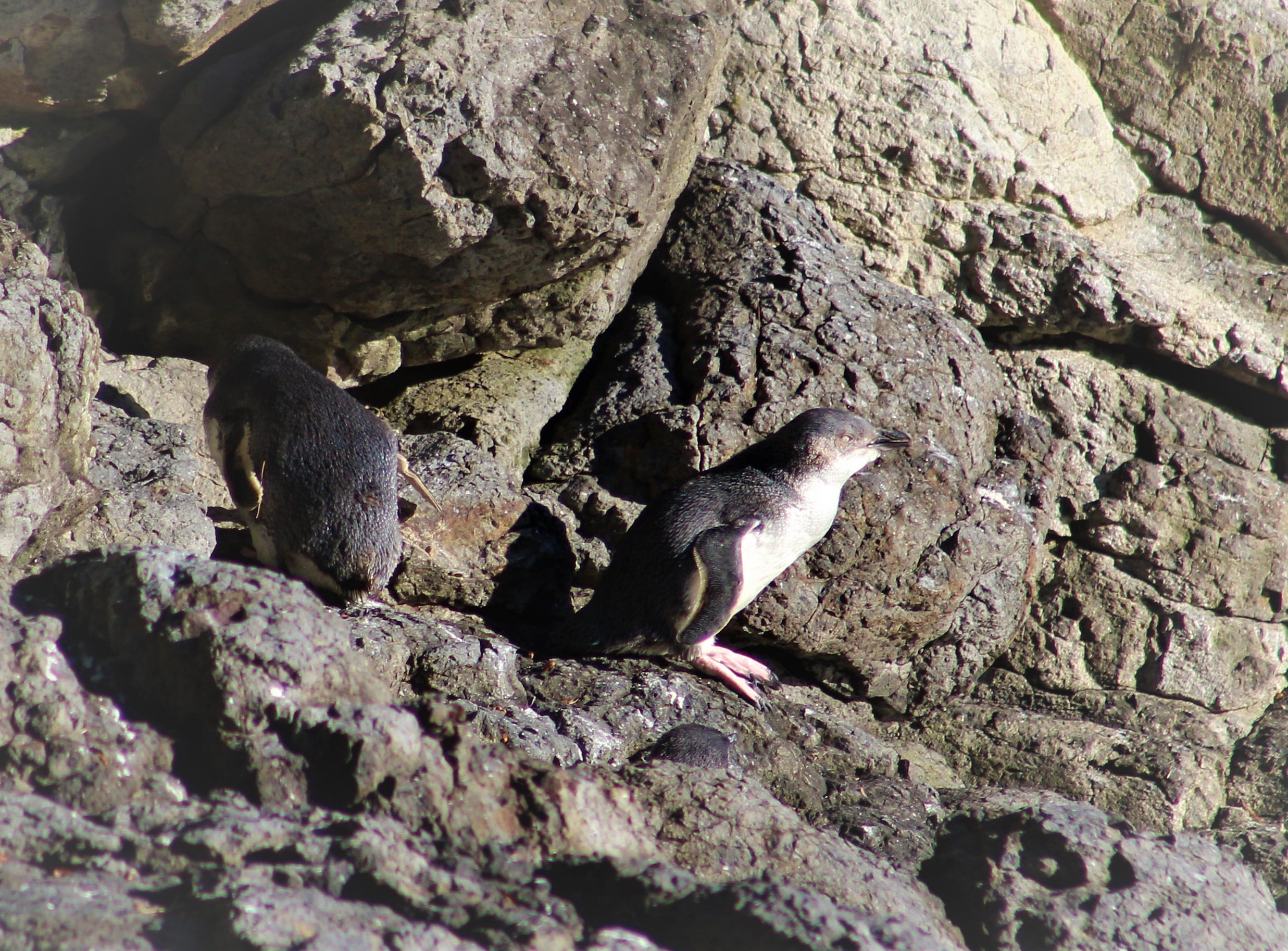
Little blue penguins at the Pohatu Marine Reserve
Delayed - updated
10.2.2018 - Ken Zillig
Good news / bad news today for the deployment. Good news; we were prioritized to be on the second flight down to the ice of the summer season. Bad news; there is persistent rough weather down at McMurdo. The station has its own weather classification system, and for a couple hours this week it has been at “Condition 1” which includes one, if not more of the following:
- Visibility less than 30 feet
- Wind speed over 63 mph
- Air temp or wind-chill below -100°F
Needless to say, they won’t be landing a plane in such conditions and as such we’ll have to wait until conditions improve. Currently we are scheduled to fly out on Oct. 3rd, 4th 5th 6th 7-10th.
But the day was not wasted! Today we received our ECW (extreme cold weather) gear. This gear is provided to us by the Antarctic program and is mandatory to be carried alongside you whenever you leave McMurdo Station to head into the field. Some notable pieces are “big red” the large down parka, and the “bunny boots” which have a valved air bladder to insulate you from the ground. The table below gives the full list of ECW gear as well as some pictures.
Today we also received some preliminary training on operating vehicles, waste disposal and fire safety. Along with a flu shot, given enmass by lining us all up and one-by-one injecting us with a vaccine dose.
| Item | Number |
|---|---|
| Big Red | 1 |
| Bunny Boots | 1 |
| Windpants | 1 |
| Fleece Jacket | 1 |
| Fleece Pants | 1 |
| Hat | 1 |
| Neck Gaiter | 1 |
| Balaclava | 1 |
| Gloves | 1 |
| Mittens | 1 |
| Glove Liners | 2 |
| Goggles | 1 |
Packing for Antarctica
The requisite gear for Antarctica is quite varied. Here I have broken out my gear by type.
| Item | Number |
|---|---|
| Lightweight Thermal Shirt | 6 |
| Midweight Thermal Shirt | 3 |
| Heavyweight Thermal Shirt | 1 |
| Fleece Pullover | 1 |
| Knit Sweater Pullover | 1 |
| Down Puffy Coat | 2 |
| Down Vest | 1 |
| Sweatshirt | 1 |
| Lightweight Thermal Pants | 3 |
| Midweight Thermal Pants | 4 |
| Fleece Lined Work Pants | 2 |
| Jeans | 1 |
| Underwear | 14 |
| Windstopper Hat | 2 |
| Balaclava | 1 |
| Sheepskin Hat | 1 |
| Gloves | 1 |
| Liner Socks | 6 |
| Wool Socks | 7 |
| Socks | 2 |
| Approach Shoes | 1 |
| Flip-flops | 1 |
| Slippers | 1 |
| Sunglasses | 2 |
| Casio Watch | 1 |
| Sandals (for New Zealand) | 1 |
| Raincoat (for New Zealand) | 1 |
| T-Shirt (for New Zealand) | 2 |
| Shorts (for New Zealand) | 1 |
| Item | Number |
|---|---|
| Camera Related | 0 |
| – Cannon Rebel Ti6 DSLR | 1 |
| – Cannon 75-300mm Lens | 1 |
| – Cannon 18-55mm Lens | 1 |
| – Camera Batteries | 3 |
| – Bird Guide For Antarctica and New Zealand | 1 |
| Recreation | 0 |
| – Hiking Boots | 1 |
| – Daypack | 1 |
| – La Sportiva Muiras | 1 |
| – Climbing harness | 1 |
| – ATC | 1 |
| Art | 0 |
| – Watercolor and Paintbrushes (set) | 1 |
| – Micron Pens (set) | 1 |
| – Drawing Pencils (set) | 1 |
| – Sketchbook | 1 |
| Laboratory | 0 |
| – Leatherman | 1 |
| – Little Green Notebook | 1 |
| – Lab Notebook | 2 |
| Tech | 0 |
| – Dell XPS 15 and charger | 1 |
| – USB Charging Adapter | 2 |
| – iPhone | 1 |
| – Kindle Fire | 1 |
| – External Harddrive | 1 |
| – Headphones | 1 |
| – PC Gaming Controller | 1 |
| REI 34 Big Haul Rolling Suitcase | 1 |
| Black Diamond Demon Duffel | 1 |
| Laptop Backpack | 1 |
| Item | Number |
|---|---|
| Toiletries | 0 |
| – Shampoo | 1 |
| – Contact Solution | 1 |
| – Contacts (pairs) | 6 |
| – Body Wash | 1 |
| – Sunscreen | 1 |
| Other | 0 |
| – Envelopes | 100 |
| – Pens | 10 |
| – Stamps | 60 |
| – Stationary Notebook | 1 |
| – Tupperware | 1 |
Travelling to Antarctica
9.15.2018 - Ken Zillig
As you may expect, getting to Antarctica is a multiple day event. Our team will leave from San Francisco, CA on September 29th 2018 on route to Christchurch, by way of Auckland New Zealand. Once in Christchurch, we will have a day or two in which to receive our extreme cold weather gear (ECW) as well as any outstanding vaccinations and preliminary training. Christchurch is one of a few cities in the world that routes to Antarctica and is the specific point of entry for people traveling to McMurdo on the Ross Sea. Currently we are scheduled to leave for Antarctica on the second flight of the season (approx. Oct 3rd)
The trip down to McMurdo is weather dependent, and will only depart if we can land safely. Should a storm develop while we are in the air the plane is equipped to conduct a “boomerang” where it will turn around without landing and fly us back to Christchurch. All of this is done aboard an U.S. C-17 or LC-130 Cargo Plane.